What The World Is Flat Means to IT Outsourcing
Last updated: January 17, 2024 Read in fullscreen view
- 07 Jul 2024
 Top Fintech Companies in Vietnam Driving Innovation Across Digital Banking & Investment 28/44
Top Fintech Companies in Vietnam Driving Innovation Across Digital Banking & Investment 28/44 - 01 Nov 2023
 Difference between Vendor and Subcontractor 12/923
Difference between Vendor and Subcontractor 12/923 - 12 Oct 2022
 14 Common Reasons Software Projects Fail (And How To Avoid Them) 10/504
14 Common Reasons Software Projects Fail (And How To Avoid Them) 10/504 - 15 Oct 2022
 Project-based team model for one-off and pilot software development projects 10/730
Project-based team model for one-off and pilot software development projects 10/730 - 24 Nov 2025
 Top Blockchain Companies in Vietnam 10/27
Top Blockchain Companies in Vietnam 10/27 - 05 Aug 2025
 Why Doesn’t South Korea Outsource Its IT Projects Like Other Developed Countries? 10/83
Why Doesn’t South Korea Outsource Its IT Projects Like Other Developed Countries? 10/83 - 03 Oct 2020
 Outsourcing Your MVP Development - Streamlined Solutions for future 9/400
Outsourcing Your MVP Development - Streamlined Solutions for future 9/400 - 21 Aug 2025
 Top 30 Oldest IT Outsourcing Companies in Vietnam 7/89
Top 30 Oldest IT Outsourcing Companies in Vietnam 7/89 - 31 Oct 2025
 The True ROI of Software Development Outsourcing for Tech Startups 7/58
The True ROI of Software Development Outsourcing for Tech Startups 7/58 - 13 Oct 2021
 Outsourcing Software Development: MVP, Proof of Concept (POC) and Prototyping. Which is better? 6/424
Outsourcing Software Development: MVP, Proof of Concept (POC) and Prototyping. Which is better? 6/424 - 24 Nov 2021
 What is the Actual Cost of Hiring Cheap Developers? 6/348
What is the Actual Cost of Hiring Cheap Developers? 6/348 - 22 Mar 2022
 8 Mistakes Marketing Agencies or Consulting Firms Make When Outsourcing Web Development 6/324
8 Mistakes Marketing Agencies or Consulting Firms Make When Outsourcing Web Development 6/324 - 10 May 2021
 Project Audit and Second Opinion Services 6/236
Project Audit and Second Opinion Services 6/236 - 28 Jul 2022
 POC, Prototypes, Pilots and MVP: What Are the Differences? 6/606
POC, Prototypes, Pilots and MVP: What Are the Differences? 6/606 - 05 Jan 2022
 What Outsourcing Engagement Model is Right For You? 5/290
What Outsourcing Engagement Model is Right For You? 5/290 - 11 Mar 2023
 Common Pain Points in Software Development Outsourcing 5/227
Common Pain Points in Software Development Outsourcing 5/227 - 30 Dec 2022
 Top 6 Reasons to Partner with TIGOSOFT 5/234
Top 6 Reasons to Partner with TIGOSOFT 5/234 - 31 Aug 2022
 What are the best practices for software contract negotiations? 5/215
What are the best practices for software contract negotiations? 5/215 - 05 Mar 2021
 How do you minimize risks when you outsource software development? 5/317
How do you minimize risks when you outsource software development? 5/317 - 12 May 2021
 The Real Cost Between Outsourcing IT vs In-House: A Quick Comparison 5/401
The Real Cost Between Outsourcing IT vs In-House: A Quick Comparison 5/401 - 25 Sep 2025
 A Practical Guide to Secure Online Work for Outsourced Teams 5/56
A Practical Guide to Secure Online Work for Outsourced Teams 5/56 - 07 Oct 2025
 Case Study: Using the “Messaging House” Framework to Build a Digital Transformation Roadmap 5/45
Case Study: Using the “Messaging House” Framework to Build a Digital Transformation Roadmap 5/45 - 06 Feb 2024
 What are benefits and drawbacks of co-creating solutions with your clients? 4/216
What are benefits and drawbacks of co-creating solutions with your clients? 4/216 - 02 May 2021
 Outsourcing Software Development: Avoid 8 Mistakes 4/89
Outsourcing Software Development: Avoid 8 Mistakes 4/89 - 14 Dec 2021
 The Top 10 Problems with Outsourcing Implementation and How to Solve Them 4/376
The Top 10 Problems with Outsourcing Implementation and How to Solve Them 4/376 - 09 Jan 2021
 How can outsourcing enable business agility? 4/178
How can outsourcing enable business agility? 4/178 - 04 Oct 2022
 Which ERP implementation strategy is right for your business? 4/278
Which ERP implementation strategy is right for your business? 4/278 - 12 Dec 2021
 Zero Sum Games Agile vs. Waterfall Project Management Methods 4/374
Zero Sum Games Agile vs. Waterfall Project Management Methods 4/374 - 01 Jan 2023
 Why is Vietnam the Top IT Outsourcing Destination of 2023? 3/202
Why is Vietnam the Top IT Outsourcing Destination of 2023? 3/202 - 12 Jan 2023
 Top 10 Trustworthy IT Outsourcing Companies in Vietnam 3/262
Top 10 Trustworthy IT Outsourcing Companies in Vietnam 3/262 - 01 Jan 2023
 4 New IT Outsourcing Pricing Models to consider in 2023 3/323
4 New IT Outsourcing Pricing Models to consider in 2023 3/323 - 01 Dec 2023
 Laws of Project Management 3/249
Laws of Project Management 3/249 - 01 Jan 2024
 12 reasons for software development outsourcing 3/146
12 reasons for software development outsourcing 3/146 - 16 Dec 2021
 Why outsource Python development of your project? 3/444
Why outsource Python development of your project? 3/444 - 21 Oct 2021
 Advantages and Disadvantages of IT Outsourcing 3/321
Advantages and Disadvantages of IT Outsourcing 3/321 - 18 Jul 2021
 How To Ramp Up An Offshore Software Development Team Quickly 3/516
How To Ramp Up An Offshore Software Development Team Quickly 3/516 - 19 Mar 2021
 Selective Outsourcing of IT Functions - a new trend in business outsourcing 3/495
Selective Outsourcing of IT Functions - a new trend in business outsourcing 3/495 - 05 Sep 2023
 The Cold Start Problem: How to Start and Scale Network Effects 3/167
The Cold Start Problem: How to Start and Scale Network Effects 3/167 - 01 Jan 2024
 Tech Partnerships: Choosing the Right Software Outsourcing Firm in Vietnam 3/165
Tech Partnerships: Choosing the Right Software Outsourcing Firm in Vietnam 3/165 - 08 Oct 2024
 Vietnam: The Rising Star in Global Outsourcing – Trends and Costs for 2025 3/289
Vietnam: The Rising Star in Global Outsourcing – Trends and Costs for 2025 3/289 - 07 Nov 2024
 Outsourcing Crisis Looming: Will Trump's Policies Transform the Global IT Landscape? 3/157
Outsourcing Crisis Looming: Will Trump's Policies Transform the Global IT Landscape? 3/157 - 01 Jan 2024
 Software Outsourcing Questions for 2024 3/145
Software Outsourcing Questions for 2024 3/145 - 01 May 2024
 Warren Buffett’s Golden Rule for Digital Transformation: Avoiding Tech Overload 2/188
Warren Buffett’s Golden Rule for Digital Transformation: Avoiding Tech Overload 2/188 - 04 Oct 2021
 Product Validation: The Key to Developing the Best Product Possible 2/295
Product Validation: The Key to Developing the Best Product Possible 2/295 - 17 Oct 2020
 How Outsourcing can Improve Time Management for Better Business 2/184
How Outsourcing can Improve Time Management for Better Business 2/184 - 28 Oct 2022
 Build Operate Transfer (B.O.T) Model in Software Outsourcing 2/361
Build Operate Transfer (B.O.T) Model in Software Outsourcing 2/361 - 28 Oct 2022
 Expect the unexpected in 2023 - How Outsourcing Can Help? 2/184
Expect the unexpected in 2023 - How Outsourcing Can Help? 2/184 - 08 Feb 2022
 Software Development: Fixed Cost or Opportunity Cost? 2/444
Software Development: Fixed Cost or Opportunity Cost? 2/444 - 01 Sep 2019
 Outsourcing Software To Vietnam: Facts, benefits and limitations 2/392
Outsourcing Software To Vietnam: Facts, benefits and limitations 2/392 - 10 May 2021
 What are things you should look for in a good IT outsourcing company? 2/405
What are things you should look for in a good IT outsourcing company? 2/405 - 21 Oct 2022
 Outsourcing Billable Rate 2/244
Outsourcing Billable Rate 2/244 - 06 Oct 2021
 Intellectual property issues with outsourcing software development 2/364
Intellectual property issues with outsourcing software development 2/364 - 03 Nov 2021
 7 phases of Odoo Implementation and Development: Can they be outsourced? 2/357
7 phases of Odoo Implementation and Development: Can they be outsourced? 2/357 - 11 Jan 2024
 Entering the Japanese Market: Stacking the Deck and Setting Expectations 2/125
Entering the Japanese Market: Stacking the Deck and Setting Expectations 2/125 - 01 Jan 2023
 Software Development Outsourcing Trends to Watch Out for in 2023 2/268
Software Development Outsourcing Trends to Watch Out for in 2023 2/268 - 04 Jan 2021
 VIETNAM AS A BIG ATTRACTIVE DESTINATION IN THE FIELD OF OUTSOURCING 2/276
VIETNAM AS A BIG ATTRACTIVE DESTINATION IN THE FIELD OF OUTSOURCING 2/276 - 01 Oct 2022
 Vietnam is a favorite supply of IT outsourcing services to Japan 2/230
Vietnam is a favorite supply of IT outsourcing services to Japan 2/230 - 13 Jan 2023
 What are the Hourly Rates in Offshore Software Development? 1/223
What are the Hourly Rates in Offshore Software Development? 1/223 - 03 Jan 2023
 IT Outsourcing Costs: Is outsourcing really cost-effective? 1/185
IT Outsourcing Costs: Is outsourcing really cost-effective? 1/185 - 02 Mar 2021
 Estimate the Cost of Software Development 1/312
Estimate the Cost of Software Development 1/312 - 01 Mar 2022
 Top 5 reasons why outsourcing to Vietnam is a smart move 1/262
Top 5 reasons why outsourcing to Vietnam is a smart move 1/262 - 01 Apr 2021
 IT Outsourcing to vietnam: Why It Is A Good Choice? 1/258
IT Outsourcing to vietnam: Why It Is A Good Choice? 1/258 - 01 May 2023
 Streamline Your Business with Outsourcing 1/168
Streamline Your Business with Outsourcing 1/168 - 17 Jan 2024
 What are the benefits and challenges of using multi-sourcing or single-sourcing strategies? 1/157
What are the benefits and challenges of using multi-sourcing or single-sourcing strategies? 1/157 - 04 Apr 2024
 Unlock Vietnamese-Japanese outsourcing potential 1/214
Unlock Vietnamese-Japanese outsourcing potential 1/214 - 01 Jan 2024
 Hiring Tech Talents in Asia: An Overview of Skills, Costs, and Potential 1/148
Hiring Tech Talents in Asia: An Overview of Skills, Costs, and Potential 1/148 - 12 Aug 2024
 Understanding Google Analytics in Mumbai: A Beginner's Guide 1/84
Understanding Google Analytics in Mumbai: A Beginner's Guide 1/84 - 02 Nov 2023
 What are the pros and cons of iIT outsourcing? 1/184
What are the pros and cons of iIT outsourcing? 1/184 - 10 Jan 2024
 Facts Chart: Reasons for outsourcing 1/132
Facts Chart: Reasons for outsourcing 1/132 - 08 Aug 2021
 Why Nearshore Software Development is better than In-House Development? 1/174
Why Nearshore Software Development is better than In-House Development? 1/174 - 09 Sep 2022
 Close Collaboration and Communication Can Overcome the Challenges of Distributed Teams 1/129
Close Collaboration and Communication Can Overcome the Challenges of Distributed Teams 1/129 - 31 Dec 2021
 Outsourcing Software Development to mitigate the impact of COVID-19 1/289
Outsourcing Software Development to mitigate the impact of COVID-19 1/289 - 21 Aug 2022
 Forbes: IT Outsourcing Hotspot: Vietnam, A Small But Mighty Powerhouse 1/240
Forbes: IT Outsourcing Hotspot: Vietnam, A Small But Mighty Powerhouse 1/240 - 15 Aug 2021
 TIGO Rate Formula - Things the partners should know 1/418
TIGO Rate Formula - Things the partners should know 1/418 - 13 Oct 2021
 Why Outsourcing Software Development Services Is Gaining Traction With Non-Technical Leaders? 1/299
Why Outsourcing Software Development Services Is Gaining Traction With Non-Technical Leaders? 1/299 - 11 Mar 2024
 Why You Should Hire Odoo Developers from Vietnam to Customize Your ERP System 1/89
Why You Should Hire Odoo Developers from Vietnam to Customize Your ERP System 1/89 - 01 Jun 2025
 10 Sustainable & Unique IT Outsourcing Companies in Vietnam 1/58
10 Sustainable & Unique IT Outsourcing Companies in Vietnam 1/58 - 06 Mar 2024
 [SemRush] What Are LSI Keywords & Why They Don‘t Matter /131
[SemRush] What Are LSI Keywords & Why They Don‘t Matter /131 - 01 Feb 2023
 [InfoWorld] Is your outsourcer agile enough? /182
[InfoWorld] Is your outsourcer agile enough? /182 - 19 Oct 2021
 Software development life cycles /628
Software development life cycles /628 - 12 Oct 2021
 Vietnam outsourcing path - the silk road connecting ASEAN with the developed countries (EU, US, Japan...) /282
Vietnam outsourcing path - the silk road connecting ASEAN with the developed countries (EU, US, Japan...) /282 - 16 Mar 2021
 Outsource Data Engineering Services - TIGO Streamlined Solutions /234
Outsource Data Engineering Services - TIGO Streamlined Solutions /234 - 19 Oct 2020
 The hidden costs of outsourcing software development /434
The hidden costs of outsourcing software development /434 - 10 Mar 2021
 The 7 Biggest Mistakes to Avoid Before Outsourcing a Web Development Project /224
The 7 Biggest Mistakes to Avoid Before Outsourcing a Web Development Project /224 - 03 Nov 2022
 Top questions and answers you must know before ask for software outsourcing /264
Top questions and answers you must know before ask for software outsourcing /264 - 25 Nov 2021
 Low-Cost Software Development: Buy Nice or Buy Twice? /278
Low-Cost Software Development: Buy Nice or Buy Twice? /278 - 08 Jan 2024
 Outsourcing on an As-Needed Basis /144
Outsourcing on an As-Needed Basis /144 - 01 Jan 2023
 Top Software Development Challenges in 2023 /275
Top Software Development Challenges in 2023 /275 - 01 Jan 2023
 Top 5 IT outsourcing countries in 2023 /254
Top 5 IT outsourcing countries in 2023 /254 - 15 Nov 2023
 IT Staff Augmentation Types and the Best Choice for Your Business /155
IT Staff Augmentation Types and the Best Choice for Your Business /155
The days of lump-sum outsourcing deals and blunt offshore labor arbitrage are gone. The future is about disaggregating IT processes -- and then figuring who is best equipped to handle them and where they are located. Here's how to do it right.
Nandan Nilekani, CEO of the outsourcing firm Infosys and the man who inspired the phrase “the world is flat,” is pushing a new mantra that could become just as universal:
“Work will be done where it makes the most sense.”
Relaxing on the couch in his Bangalore office, Nilekani points out that his own company has offices in 39 countries around the world. And it’s not alone. Wipro, another large India-based IT services company, has eight offices in Europe alone, and TCS, the IT services arm of the Indian conglomerate Tata, has 10 development centers and 10,000 consultants in the United States and Canada.
Meanwhile, providers we identify as American are no longer so. IBM now has 53,000 employees in India (up from 4,700 five years ago), and Accenture (which is actually based in Bermuda) will soon have more employees in India than in the United States and delivers its infrastructure and hosting services from 15 delivery centers scattered in countries across the world, including China, Argentina, Slovakia and the Philippines. In other words, as sourcing has gone global, so have sourcing companies.
And it hasn’t just spread. It’s evolved. Sourcing isn’t just about finding cheap labor anymore. Yes, you can still take something, ship it offshore and probably save a few dollars. “But cost in and of itself isn’t going to get anyone a competitive advantage,” says Tom Sanzone, CIO of Credit Suisse.
The New IT Supply Chain
The new model is more refined and complex. Today, IT services companies take work, break it down into pieces, and perform each piece in the location that offers the best combination of skill, cost, quality and manageability. If, for example, a new insurance application requires frequent contact with underwriters in New York City, any of the emerging global providers can do it there. But if there is a component of that work that only requires cheap coders, these companies will do that component in China, or if they need to speak Spanish they’ll do it in Costa Rica or Spain. “This is the future,” says Nilekani. “IT is being disaggregated. Slice by slice, the whole model is changing.”
With change comes opportunity for CIOs, who can tap into the global network that the outsourcing companies are building to improve quality, gain the flexibility and agility to respond to business changes faster, and, yes, save money. The outsourcing vendors have spent the past several years establishing centers of excellence dedicated to specific tasks—Java programming or business intelligence, for example. This allows for economies of scale and maximizes the chances that someone will find a way to improve the process. It also means that outsourcers have assembled deep rosters of talent, organized by skill and experience, that most CIOs cannot match. “I can’t think of any IT organization that has skilled people just sitting on the bench,” says Alan Boehme, CIO of Juniper Networks. “What you are really talking about is building a variable cost model for your IT organization.”
To reap all the benefits that modern outsourcing can provide, CIOs need to start thinking like a service provider, says Dane Anderson, an analyst with Gartner. That means examining your own internal model for IT service delivery and breaking down the work into the most granular pieces possible, just like outsourcing companies are doing. “You have to look at your operating model and ask how it developed and for what reasons,” says Sanzone. “Then you need to ask yourself if it still makes sense in today’s environment.” It’s a grueling process that Sanzone says can take a team months to complete. But it’s worth it. Thanks to the evolution of the outsourcing industry, he says, “You have a chance to reinvent your operating model. That is what we are really talking about.”
Stop Outsourcing Problems
When a company first engages an outsourcer with offshoring capabilities, it is usually thinking one thing: reduce costs. True, the labor arbitrage can be staggering; an experienced full-time engineer in India, Vietnam or Eastern Europe costs about $30,000 a year, and only half that in China (U.S. programmers can cost as much as $90,000 a year, according to a 2007 salary study by Robert Half Technology, a staffing firm). Not surprisingly, many, if not most, companies end up saving money—at least up front—when they outsource offshore. Consequently, according to a recent McKinsey report, a large majority of outsourcing customers say that on the whole they are very satisfied with their offshore outsourcing initiatives.
But the initial cost savings often mask long-term problems. Most companies tend to outsource processes without examining their quality and efficiency. They generally hope—or contractually demand—that the outsourcer fix things for them. Indeed, after the first year of an engagement, McKinsey found, companies begin to focus less on cost savings and more on flexibility and agility. That takes time, money and management attention—and may blow away the initial cost savings. “If you are outsourcing a problem, it will still be a problem,” says Bill Homa, CIO of the supermarket chain Hannaford Bros.
Breaking down IT processes into discrete components and analyzing which ones you can or should do and which ones a partner with subject matter expertise should do lets CIOs avoid merely shifting bad processes to an external provider. “If the CIO paints all of his IT areas with the same outsourcing brush, he is going to fail,” says Joseph Rottman, assistant professor of IS at the University of Missouri, St. Louis.
Break Down the Work
Boehme knows how to break things up and parse the work sensibly. For example, at a previous job he had to build an order configuration management system. He had his own people do the requirements gathering since they understood the business and worked closely with the users. The design was done with a mixture of in-house staff and contractors. Three groups—one in India, a team of onsite contractors, and students at a local university—did the actual coding. Yet another group did the initial testing before his team did the final regression and load testing and finished the deployment. “It made sense to do it this way since we didn’t have all the skills in-house and we couldn’t move people off of other projects,” Boehme says. But he found that breaking down the work like this allowed the project to be finished 25 percent faster and 20 percent cheaper than if he had done it all in-house or outsourced it entirely. Plus, his team was able to keep architectural control and retain the intellectual capital the project created.
By understanding exactly what a process or task requires, CIOs can determine if they have the skills and the resources internally to do the project and if doing so would give their companies a competitive advantage. If not, an outsourcer can sometimes take better advantage of geographic location and a deeper bench of special skills to do the job. It’s a low-cost way to get the skills you need, in the place you need them, for as long as you need them. “If I have 20 testing resources working on PeopleSoft, I don’t have the volume” to get economies of scale and to quickly react to business changes, says Boehme. But outsourcers do. “And at the same time, because of the size of their organizations they have the ability to offer advanced training programs to those people as well,” he says.
How to Be Introspective
The first step to componentizing your IT department is to stop thinking of the various jobs IT does as functions, and start thinking of them as services. It sounds like semantics, but there is an important distinction: Functions describe something from the perspective of the person or group performing it, while services describe it from the perspective of the person or group who benefits. “What is a help desk after all?” asks Gartner’s Anderson. “It provides a service to internal users of IT.” Look across the rest of the department, he says. “Everything can be considered a service. You just have to figure out who the customer is.”
Once you adopt that mind-set, you are in a position to think about your IT department like a discerning shopper and not get distracted because something has always been done a particular way. That’s critical, because componentizing your IT department will require you to challenge assumptions and the status quo. CIOs need to break each of these services into discrete processes, and each process into tasks. (In outsourcing lingo, tasks are a subset of processes. For example, requirements gathering might be a process; talking to users would be a task.) In some cases processes and tasks will overlap. In others, you will find extraneous or poorly performed steps. That’s one of the benefits of the exercise, says Louis F. Rosenthal, executive vice president of ABN Amro Services. “I don’t think that a company can be rigid with its own processes and expect to get maximum value from a strategic sourcing partner,” he says. CIOs need to do more than merely evaluate the processes they have; they must think about the processes they want to have in the future.
It’s not enough just to identify these processes, however. They need to be broken down into specific tasks. For example, a company may have a group of programmers who understand every aspect of the business and turn out amazing applications that give the company a competitive advantage. Outsourcing the entire application development process in this case would be a nonstarter. But if you break down the application development process, you end up with a list that looks something like: requirements gathering, functional design, physical design, building, testing and deploying. Maybe the team isn’t great at testing. Or maybe there is a testing group somewhere in the world that can perform that task cheaper and more efficiently. Breaking processes into tasks gives you the opportunity to make these kinds of decisions.
The End of the Billion-Dollar Outsourcing Deal
Understanding your IT department at this level also makes you a better outsourcing customer. Rather than taking large pieces of IT and outsourcing them to one vendor in a megadeal that essentially marries the company to that partner, CIOs can use the insight they gain from the analysis to find the right partner for specific processes and tasks. In fact, Boehme suggests that CIOs should have at least two partners, and make them compete for your dollars.
Jimmy Harris, managing director of infrastructure outsourcing for Accenture, agrees, although he warns of a few potential problems. First, he says, it isn’t a good idea to divide a process between vendors, despite some vendors’ claims that they can work together. Also, he says, CIOs should not spread out the tasks that form a particular process too broadly, because it just adds complexity. Workers are less motivated because they feel as though they have less invested in the final product. And, he adds, “If you have to engage in thousands of low-level communications because you broke up the work at too fine a level, you are going to lose stuff.”
In fact, in order to combat the complexity that comes from spreading your IT processes and tasks around the world, some CIOs have created a high-level position to keep track of outsourcing vendors and the projects that they are working on. “It’s an emerging function that may not have existed at a global level before,” says ABN Amro’s Rosenthal. “Vendor management becomes much more important now. [Having that group] helps us facilitate business decisions in ways that we didn’t have to before.” Applying this kind of methodology to your IT operations will let you see what components of your organization can be moved. By tapping into the skills network that outsourcing companies have built, you can react to new requirements faster. It’s enough to let even the smallest companies act like a big company.
“We’ve been able to get our staff to move up the value chain,” says Homa, reflecting on the impact that taking advantage of the new outsourcing world has had on his department. “It’s allowed us to raise our game.”
Questions to Ask
The next step is to figure out whether a process or a task can or should be outsourced. The way to do this is by running each one through a set of questions. While the exact questions will vary depending on the company, department or process, here are some guidelines suggested by CIOs who have done it.
1. Does this have to be done inside our office?
Almost anything can be done from anywhere, including tasks that would have seemed impossible to do from afar just a few years ago—network monitoring for example. CIOs need to establish whether the person performing a task has to be physically present in order to get it done. It could still be outsourced, of course—the old model of hiring consultants to work in your office hasn’t gone away completely.
This is the first question that Sanzone, the Credit Suisse CIO, asks when he is evaluating a task or process. He’s looking for a solid business reason behind the answer. For example, he recently developed a new trading application for his company’s brokers. The first task in the process—requirements gathering—is the sort of thing that needs a lot of back and forth between IT and the brokers. It could be done over the telephone or through collaboration software, but realistically the best results always come from face-to-face meetings. And being colocated makes it easy to ask quick, stupid questions that someone offsite might not feel safe in asking. So despite the fact that New York, where the traders work, is the most expensive market in the country, it made the most sense to do the requirements gathering there.
And of course if the answer is no, then the process or task is a candidate for outsourcing.
2. Are there other geographic limitations?
Sometimes a process or task doesn’t require face-to-face interactions but frequent contact is still important. It is possible to outsource these projects, but the outsourcer better be located nearby. Boehme was involved with a project during a previous job that involved a lot of data scrubbing. His department wasn’t staffed for the project, and it was low-level work anyway. “But at the end of the day you have to call people and verify their addresses,” he says. He found a partner in Mexico that had the computer skills, the language skills and, best of all, a voice over IP network, making the phone calls even cheaper. He decided on Mexico because he wanted to have people in the same time zone so they could call U.S. customers when they had to. It worked great. (He tried to source a DBA project in Mexico more recently, but after 90 days of interviewing, he couldn’t find the skills he needed. He ended up moving the project to India and having a team there work the night shift.)
When Sanzone was sourcing the trading application, he realized that the design team needed to be in occasional, but not frequent, contact with the requirements group and the traders—just enough to get a few questions here or there answered. So he decided to source that task out of Credit Suisse’s Raleigh office. The project was still done by his employees and in the Eastern time zone, but it was a less expensive rate than New York.
3. Does having your employees do it provide you with a competitive advantage?
This is the number-one reason not to outsource something. And it is a determination that every company will have to make for itself. There are some things that hardly any CIO would outsource—architecture, for example. And then there are situations where the answer may be counterintuitive. Homa, the Hannaford Bros. CIO, doesn’t outsource his help desk, even though that has become the low-hanging fruit for many first-time outsourcers. “I support about 300 internal applications and it would be very difficult to train an outsider how to answer those questions,” he says. But it would be possible. And if the cost savings were large enough, he might try to do it.
But there’s an important argument against it that isn’t readily apparent until you look—and think—more deeply. Hannaford Bros. is based in Maine, where IT talent doesn’t exactly grow on trees. So Homa views the help desk as an important training ground for his future stars. “My help desk is my farm team,” he explains. “It is a great way to get into IT without having an IT background. Maybe a third of the people who came into IT came in through the help desk.”
If Homa outsourced the help desk, he would be limiting his ability to grow the rest of his IT department. It’s not an obvious reason, and it illustrates why deciding to outsource something requires more than just a cursory level of scrutiny.
Ben Worthen writes about emerging business trends.






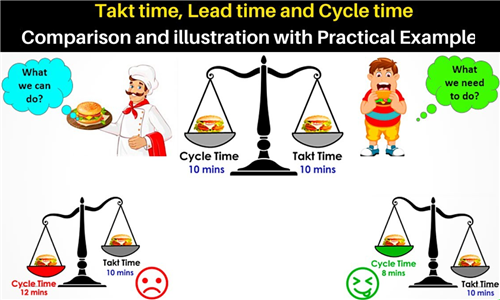

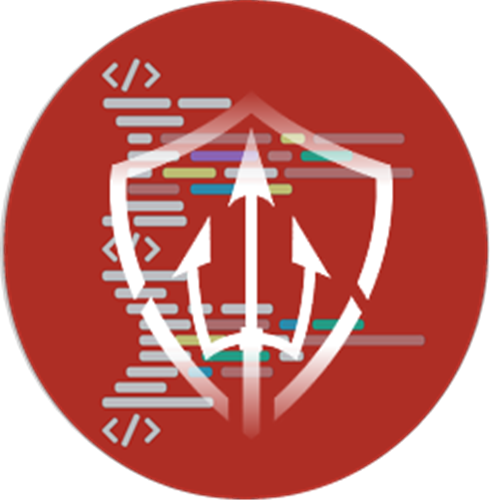



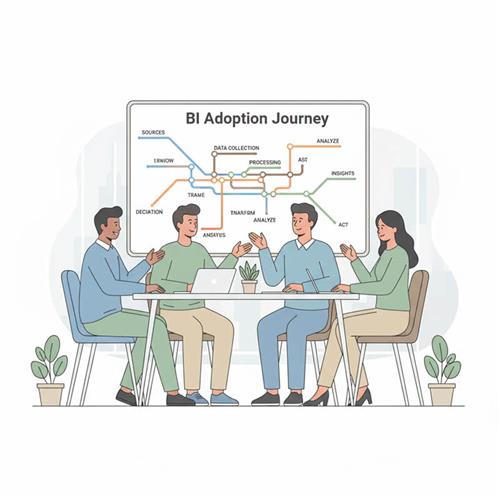
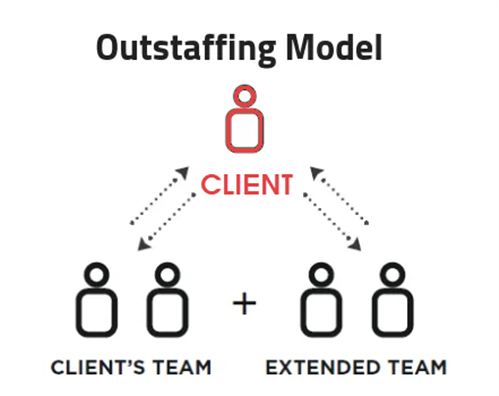

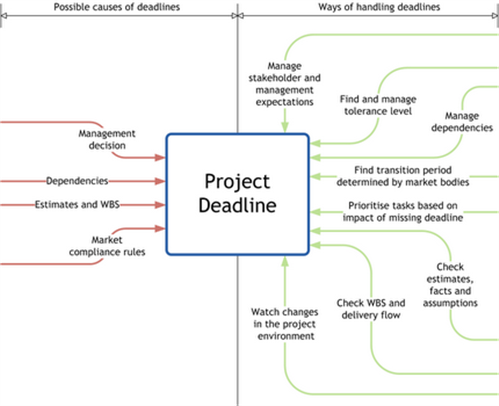
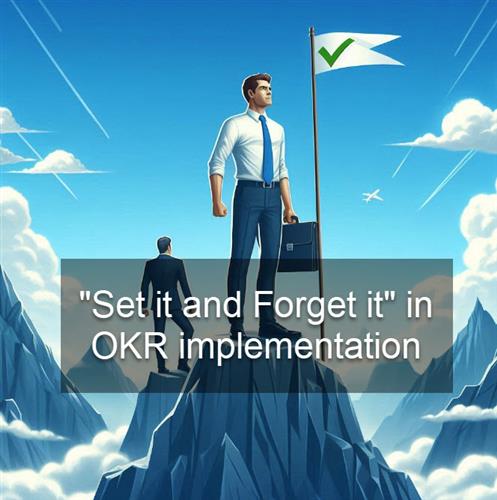

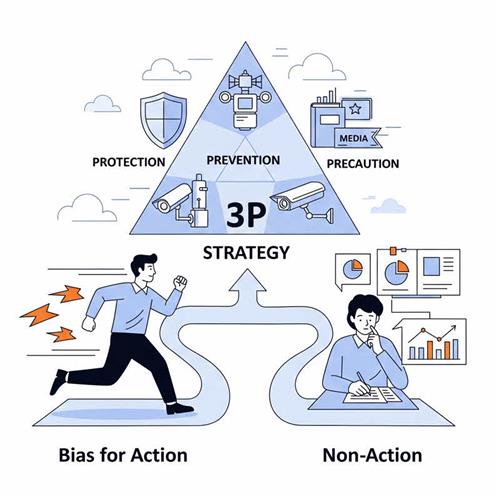
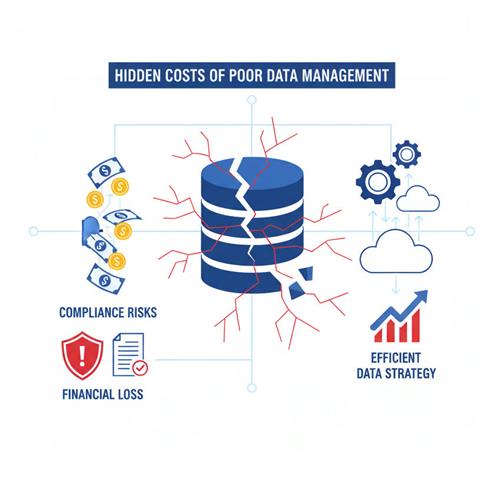




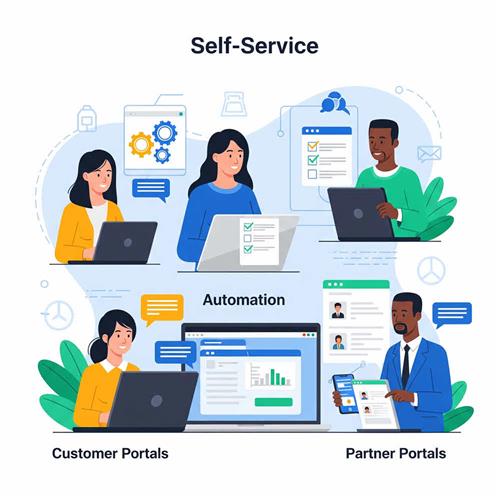
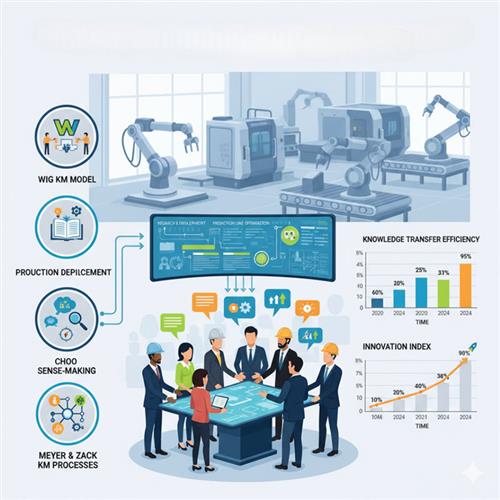









 Link copied!
Link copied!